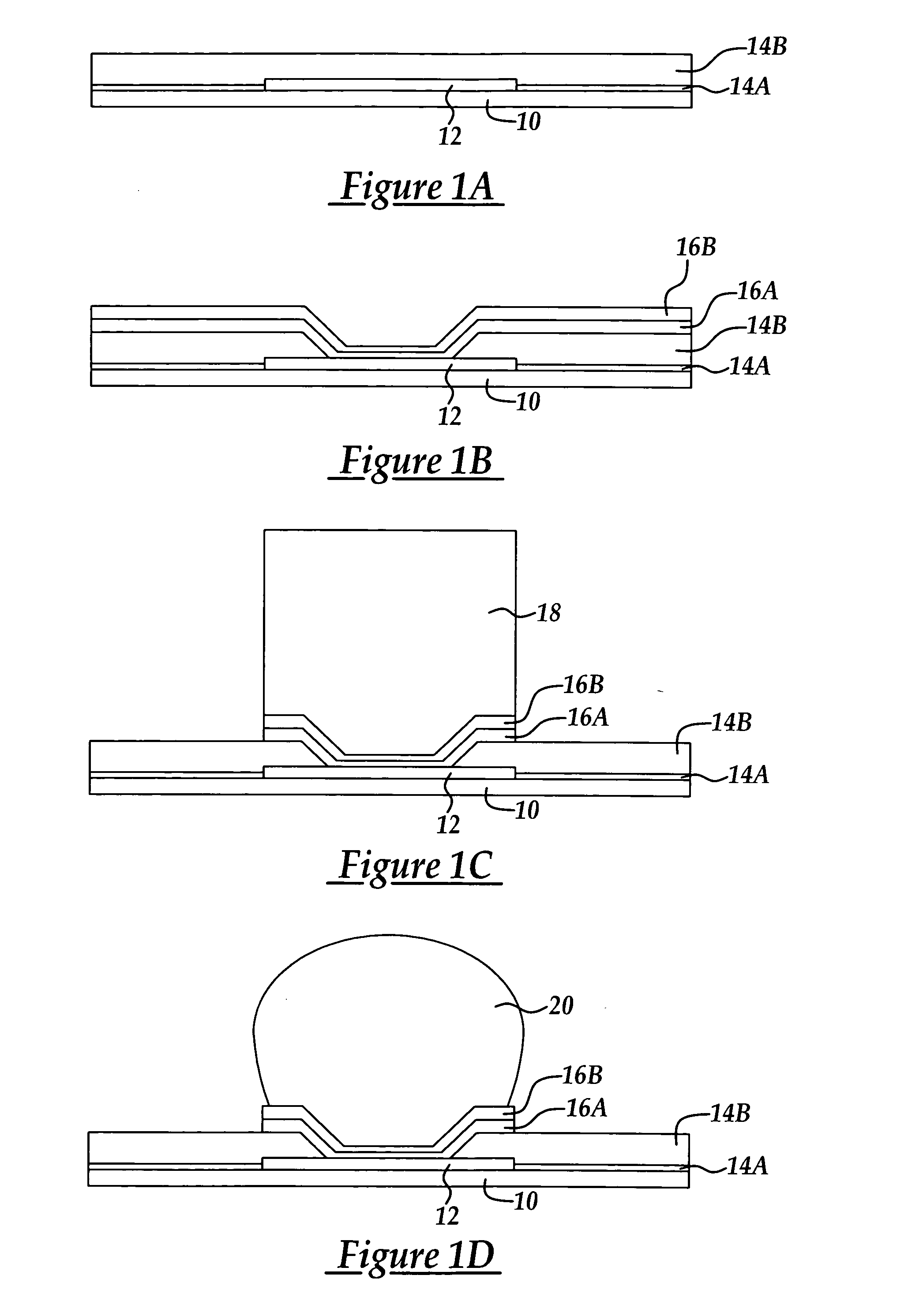Method to prevent passivation layer peeling in a solder bump formation process
a technology of passivation layer and solder bump, which is applied in the direction of semiconductor devices, semiconductor/solid-state device details, coatings, etc., can solve the problems of reducing the yield affecting the reliability of the process, and the tendency of the polymer layer b>14/b> to become detached and peel, so as to improve the yield of the process. the effect of improving the reliability
- Summary
- Abstract
- Description
- Claims
- Application Information
AI Technical Summary
Benefits of technology
Problems solved by technology
Method used
Image
Examples
Embodiment Construction
[0013] Although the method of the present invention is explained with reference to a solder bump formation process where a polyimide passivation layer is included as the uppermost passivation layer underlying a UBM system, it will be appreciated that other curable polymer resins producing a cross-linked polymer structure upon exposure to thermal energy and where gaseous species are generated in a curing (energy exposure) process at a temperature above a glass transition temperature (Tg) may also be used as the upper most passivation layer in the method of the present invention. The method of the present invention advantageously avoids the formation of gas pockets or bubbles generated during the curing process above Tg to improve a wafer yield and device reliability in a semiconductor micro-integrated circuit manufacturing process including a solder bump formation process.
[0014] Referring to FIGS. 1A-1D are representative cross-sectional views at stages in a manufacturing process ac...
PUM
| Property | Measurement | Unit |
|---|---|---|
| Temperature | aaaaa | aaaaa |
| Temperature | aaaaa | aaaaa |
| Temperature | aaaaa | aaaaa |
Abstract
Description
Claims
Application Information
 Login to View More
Login to View More - R&D
- Intellectual Property
- Life Sciences
- Materials
- Tech Scout
- Unparalleled Data Quality
- Higher Quality Content
- 60% Fewer Hallucinations
Browse by: Latest US Patents, China's latest patents, Technical Efficacy Thesaurus, Application Domain, Technology Topic, Popular Technical Reports.
© 2025 PatSnap. All rights reserved.Legal|Privacy policy|Modern Slavery Act Transparency Statement|Sitemap|About US| Contact US: help@patsnap.com



